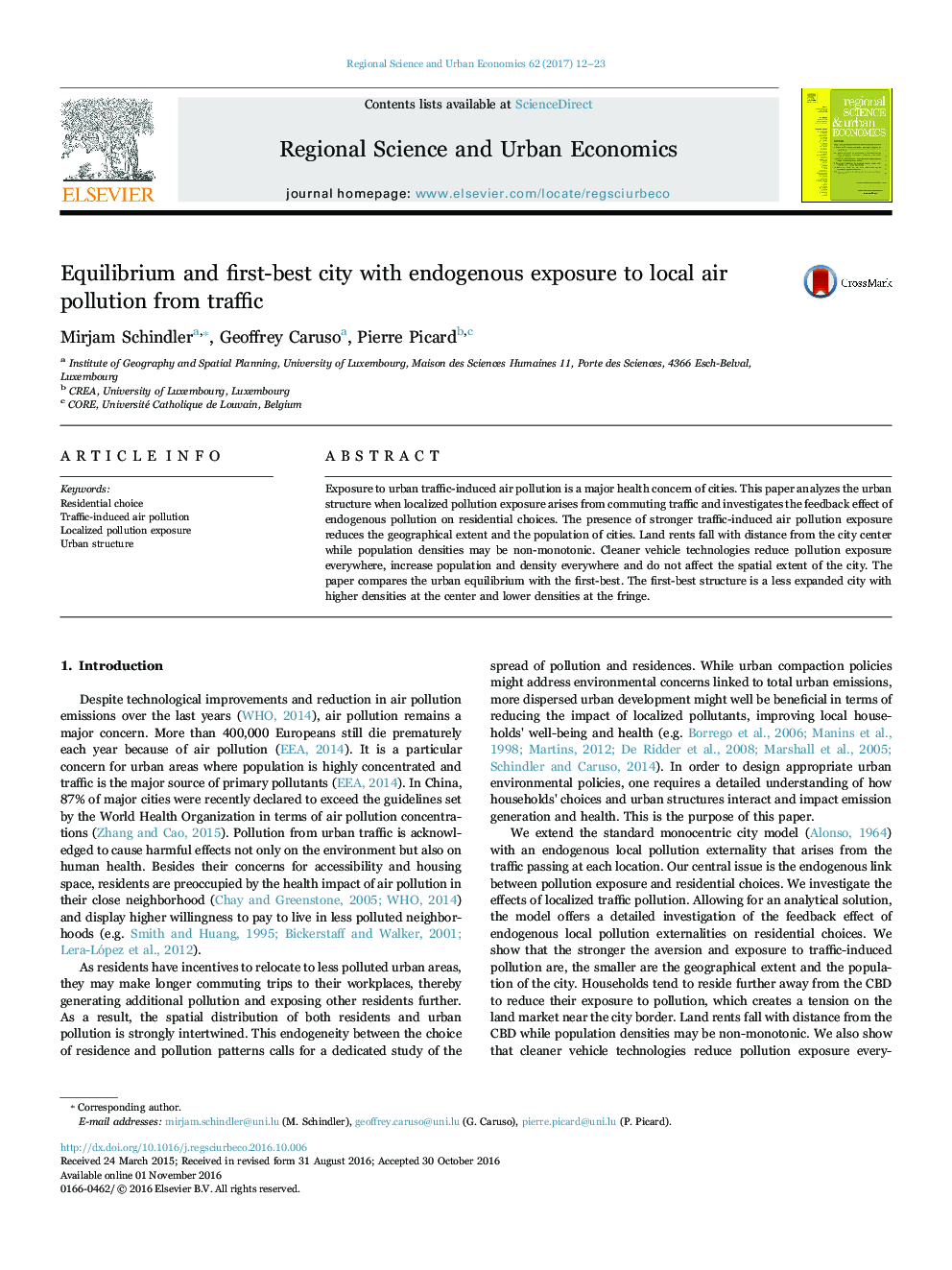| Article ID | Journal | Published Year | Pages | File Type |
|---|---|---|---|---|
| 5103739 | Regional Science and Urban Economics | 2017 | 12 Pages |
Abstract
Exposure to urban traffic-induced air pollution is a major health concern of cities. This paper analyzes the urban structure when localized pollution exposure arises from commuting traffic and investigates the feedback effect of endogenous pollution on residential choices. The presence of stronger traffic-induced air pollution exposure reduces the geographical extent and the population of cities. Land rents fall with distance from the city center while population densities may be non-monotonic. Cleaner vehicle technologies reduce pollution exposure everywhere, increase population and density everywhere and do not affect the spatial extent of the city. The paper compares the urban equilibrium with the first-best. The first-best structure is a less expanded city with higher densities at the center and lower densities at the fringe.
Keywords
Related Topics
Social Sciences and Humanities
Economics, Econometrics and Finance
Economics and Econometrics
Authors
Mirjam Schindler, Geoffrey Caruso, Pierre Picard,
